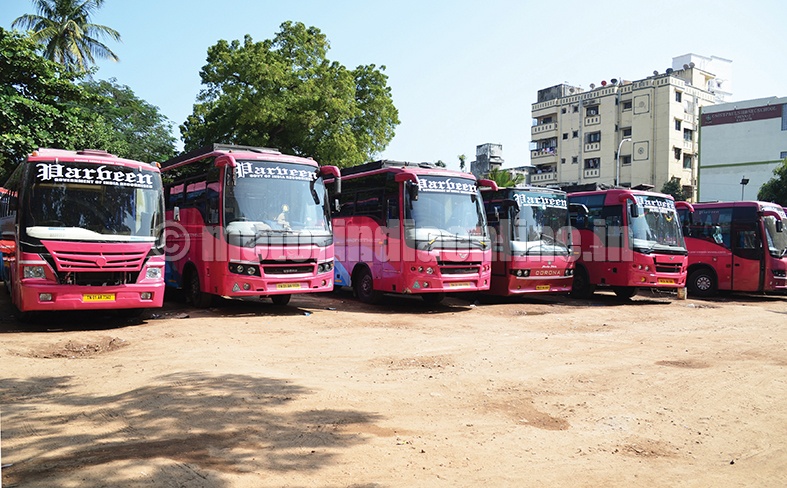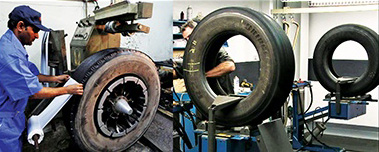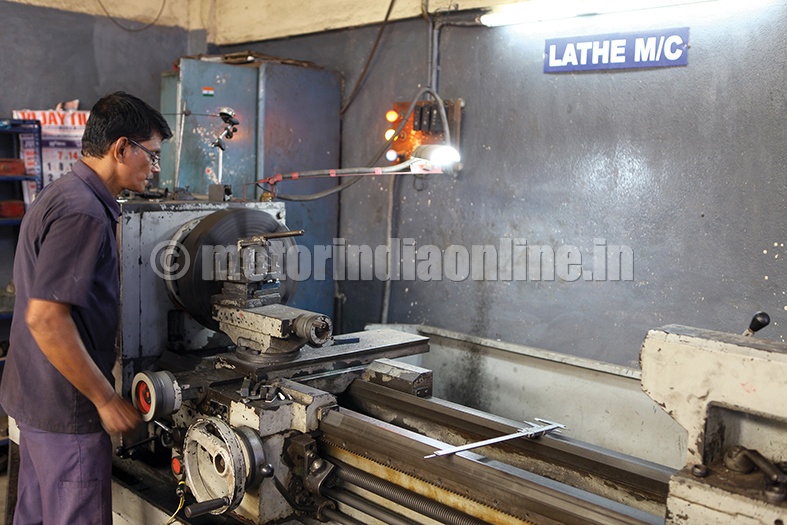Automotive domain in the recent times has witnessed paradigm shifts vis-à-vis design, engineering and manufacturing technology of engines, transmissions to varied subsystems, components and computerised controls bordering on autonomous vehicles, both in trucks and cars. The feverish development pace and progress on various fronts are likely to cause technology upheavals as never before; but one of the few subsystems to remain by and large the same in the expected transformations be it the hybrid, fuel cell or the electric vehicles, is likely to be wheel and tyre combination. Focussing on the tyres segment, various technological advancements have consistently taken place but these are perceptible only to the discerning end users and keen domain followers; and for the others, the tyres just seem to be carrying on with the enduring shape, function and utility value thro’ the passage of time. How valid are these perceptions and what have been the important developments in the tyres segment? We met one of the important fleet operator’s technical team to get their feedback regarding above and as well their product choice for the applications, maintenance aspects, expectations, etc. – read on for their considered insights.
Fleet operator overview
Parveen Travels (P) Ltd., Chennai [PTPL], one of the star performer companies under the established Parveen Group, is a leading travels domain firm in south India with a fleet size of 700 intra city buses, 350 intercity coaches, 70 cargo trucks and miscellaneous transport carriers totalling about 1350 vehicles. “The entire fleet is maintained by Parveen Automobiles (P) Ltd. [PAPL] under the brand name Motorzone, at its integrated service facility near Chennai. PTPL is the captive fleet customer for Motorzone and we handle also varied other fleet customers”, indicates Mr. M. Sriram, Head – Projects, Motorzone. PAPL attends to the issues connected with technical, maintenance and service in toto, adds Mr. J. Joseph Raj Paul, Manager – Technical, PAPL. Apart from the central integrated service facility, there are 10 site workshops for attending to the maintenance of buses that cater to the customer needs and Mr. Joseph visits all these workshops regularly to inspect/check for the effective implementation of maintenance schedules and advise on miscellaneous service issues. The central workshop under the control of Mr. V. Kotteeswaran, Works Manager, PAPL, supports the site workshops for parts and other specialised services – apart from attending to the major/routine service functions at its premises both for captive fleet and other operators.
Types, costs and life
Tyres used in the fleet are nylon (cross ply/bias) about 50 per cent and balance radial, points out Mr. Kotteeswaran. Commenting on the types and mix he says: “Radialisation is expected to go up significantly in the bus segment considering the advantages of radial over nylon for the application. Typical tyres utilised are 10.00X20-16PR nylon, 10 R 20, 11 R 22.5 & 295 R 22.5. Nylon tyre with tube and steel wheel combination is steadily on its way out getting replaced by radial tyre with tube and steel wheel. In the popular model buses (6 wheel-2 axle), radialisation is becoming the norm. In the high-end multi-axle buses (currently 10 wheel-3 axle), radial tyres tubeless type are being used but with steel wheel. Trials are also on with forged aluminium alloy wheel for the radial tubeless type to improve upon the performance parameters”.
Cost per km (CPK) is an important parameter for keeping track of the performance of tyres, opines Mr. Joseph. He explains: “Currently CPK (considering total tyre life) for nylon tyre works out to Rs. 1.2/km and radial Rs. 1.0/km for their bus fleet. Tyre consumption is about 80 nos. per month and it has been fixed as the norm based on standardisation of cost elements. Though the new radial tyres are costlier as compared to nylon, the operational cost savings make it an attractive proposition in their procurement decision- apart from of course the various other accruing benefits such as driving comfort, lesser down time due to routine and breakdown maintenance checks, etc.”
As regards life for original tyre and that after retreading Mr. Joseph elaborates: “For nylon type, the new tyre gives about 60,000 km before being taken up for the 1st retreading. Nylon tyres are considered for retreading two times before taken out of the transport runs – tyre retreaded twice lasts up to 1,40,000 km. For radial type the new tyre gives about 1,20,000 km before the same is taken up for the 1st retreading. Radial tyres are also considered for retreading two times before taken out of the transport runs – tyre twice retreaded runs for more than 2,00,000 km. The above cited are for intercity coaches that cover long distances. For the intra city buses, duty cycles are different and invariably these run on retreaded tyres most of the times while new tyres are essentially used in intercity coaches”.
Maintenance checks
The tyre costs and its useful life are invariably connected to the rigours of the maintenance schedule implementation, states Mr. Kotteeswaran. He adds: “For the new tyres, upon its receipt various parameters are checked for conformity to manufacturer’s specs like weight, tread pattern, depth, speed rating, etc., before fitment. Wheel balancing, alignment and other mechanical checks are also carried out before the approval and induction into operations. During the transport runs, regular checks for tyre pressure (once in 3 days or every 1,500 km) are done apart from daily visual tyre checks by the driver and the workshop staff. Tread wear pattern and depth are also noted. In radials, if the tread depth reaches about 2-3 mm (wear of about 14 mm), it’s taken up for retreading while in nylon the retreading is taken up once the base surface beyond tread root is visible. Powdering and wheel rotation are done once every 10,000 km. Wheels are removed, tyres/tubes powdered and assembled (if needed wheel alignment also done) as per the scheduled tyre mileage programs”.
Mr. Joseph remarks: “Wheel alignment is done once in 3 months and/or after 20,000 km run; or based on any mechanical defect/damage reports. Small stones and pebbles that get embedded in treads are regularly removed; in rainy seasons, especially when the tyres go thro’ water, the road surfaces are not seen and any further impact can make these embedded stones cause tyre damage – hence frequency of maintenance checks are more during these times”.
Future trends
The technical team of PAPL opines that the future trend for buses and coaches will be tubeless radialisation with both steel and aluminium wheel combinations as per application needs. Various tyre manufacturers are vying with each other to produce better quality tyres with improved features; yes, such measures are readily appreciated by fleet operators who know that only the same will ensure their competitiveness in the growing and yet price sensitive market. Though the nuances of a design improvement may not be readily grasped, their future expectations for the tyres are loud and clear – ‘lower costs, longer life and higher safety’ that will ensure profitability while providing comfortable travel to their demanding passengers.


